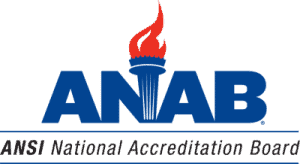Why Do You Need a Management Review?

Why Do You Need a Management Review?
Would you fly or sail over the oceans without instruments to navigate your way? A small error at the beginning of your journey could lead to being significantly off course and missing your end target without the navigational aids to guide you.
Numerous accreditation standards include a requirement for Management Review. Some laboratories treat the Management Review requirement as a task to check off their list each year because the accreditation body says so. Sadly, they’re missing the point of this powerful management tool. During assessment activities, nonconformities pertaining to the Management Review appear on the top ten list of nonconformities every year, something that could easily be avoided with good planning.
The purpose of conducting a Management Review is to ensure both the laboratory’s operational goals and requirements of the accreditation standard are met.
Planning Management Review
The laboratory should plan their Management Review activities to best suit their individual needs. This could be in the form of a single annual meeting or by holding several Management Review meetings throughout the year. The requirement is that all inputs and outputs covered during the meetings, documented, and retained. Shorter Management Review meetings at regularly scheduled intervals (per the plan established by the laboratory), may allow a deeper discussion and analysis of specific inputs and review of output tasks from the previous meetings to clearly show the laboratory’s direction when implementing changes or improvements to the management system. No matter how the laboratory chooses to conduct their Management Review meetings, they should have a procedure or template to ensure all required elements of the review are completed and recorded.
Management Review is a powerful tool that can drive improvements in the laboratory’s management system and operations. Where potential gaps or risks are revealed, the laboratory can activate a plan (outputs) to drive internal improvements, mitigate risks, or capture potential market opportunities.
Detecting Trends During Management Review
When conducting your Management Review, it is important to analyze the inputs to detect trends. As an example, a lab may note they received 12 complaints over the past year. What kind of complaints? Is there a trend that can be acted upon? If most complaints pertained to turn around time, the lab may see this as an avenue for their focus to drive improvements that yield the highest impact. The same principle would apply to several Management review inputs such as:
- Changes to internal/external issues relevant to the facility
- Fulfilment of objectives
- Suitability of policies and procedures
- Status of action items for the previous Management Review meeting
- Results from internal/external audits
- Corrective actions
- Customer and employee feedback
- Changes in work volume and type of work performed in the lab
- Identification of risks.
These are just a few areas where an analysis of trends could help navigate significant improvements.
Using SMART Goals for Management Review
A critical step in the Management Review is to identify the outputs (documented and retained), in a way to assist the lab as a tool for driving improvements. One way is to consider SMART goals for each output identified:
- Document tasks to be performed by identifying the Specific task.
- How with the task be Measured; what is the status of the task?
- Who will be Accountable for completing and/or participating in conducting the task?
- Is the task Realistic, can the lab achieve the goal?
- When is the task due to be completed, is the task written to be Time sensitive?
Addressing outputs this way may assist the lab in tracking progress on goals and objectives identified during the Management Review and help assure these navigational goals don’t fall through the cracks unattended until the next Management Review meeting.
The Importance of Management Review
Your Management Review should always ensure that the facility’s management system continues to be suitable, adequate, and effective in meeting the laboratory’s management and operational objectives. Routinely review your outputs to ensure opportunities identified are not forgotten in the hustle and bustle of daily life in the laboratory and improvements are implemented per plan.
Reference:






